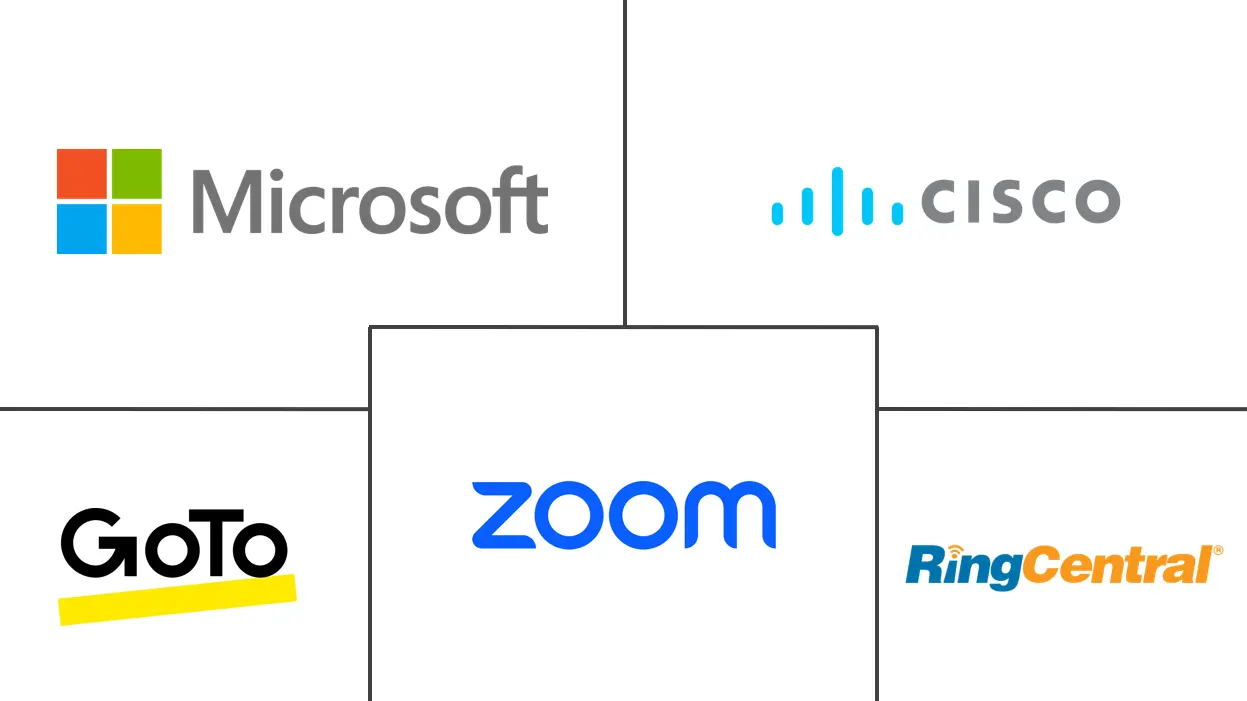Market Size of Audio Conferencing Industry

| Study Period | 2019 - 2029 |
| Market Size (2024) | USD 19.10 Billion |
| Market Size (2029) | USD 29.46 Billion |
| CAGR (2024 - 2029) | 9.06 % |
| Fastest Growing Market | Asia Pacific |
| Largest Market | North America |
| Market Concentration | Medium |
Major Players
*Disclaimer: Major Players sorted in no particular order |
Audio Conferencing Market Analysis
The Audio Conferencing Market size is estimated at USD 19.10 billion in 2024, and is expected to reach USD 29.46 billion by 2029, growing at a CAGR of 9.06% during the forecast period (2024-2029).
- A significant trend in the audio-conferencing market is incorporating audio-conferencing features into comprehensive Unified Communications platforms. Businesses gravitate towards solutions that merge audio, video, messaging, and collaboration tools into a cohesive interface. This shift is fueled by a quest for streamlined communication and an ambition to boost productivity by minimizing the number of distinct tools employees rely on.
- The audio-conferencing market is witnessing a swift embrace of cloud technology. Cloud-based conferencing solutions outshine traditional on-premises systems in terms of scalability, flexibility, and cost-effectiveness. This transition empowers businesses to swiftly roll out and oversee conferencing services, all while making minimal infrastructure investments—a proposition especially enticing for SMEs.
- There's a growing infusion of artificial intelligence into audio conferencing tools. Features like real-time transcription, noise cancellation, and voice recognition powered by AI are elevating user experience and bolstering accessibility. Furthermore, automation is being harnessed to simplify scheduling, engage participants, and deliver analytics, enabling organizations to maximize their conferencing tool utilization.
- In 2024, Google rolled out its "adaptive audio" feature for Google Meet. This innovation allows the platform to automatically identify multiple laptops in a single room, seamlessly merging their speakers and microphones. The goal is to ensure that all participants are clearly heard, eliminating the need to gather around one laptop while also minimizing echoes and audio feedback.
- The market faces several challenges. It's highly competitive, with many players offering similar features, making differentiation a tough task. Moreover, as hybrid work models gain traction, companies grapple with delivering a consistent experience for both in-office and remote employees.
- The audio-conferencing market underwent a significant transformation due to the macroeconomic shock of the COVID-19 pandemic. Lockdowns led to an unprecedented spike in demand for audio conferencing solutions as businesses sought to uphold communication and collaboration without in-person meetings. In the post-pandemic world, factors like the globalization of businesses, evolving remote/hybrid work trends, and the need for efficient cross-border communication are anticipated to continue to fuel the demand for audio conferencing solutions.

